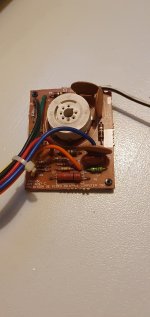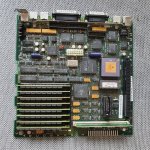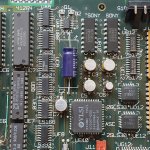Hello,
I am looking for an advice about my problem with the SE 30.
The picture shows analog horizontal lines. Looks not like an error from a digital part. I have already washed the board completly in the dishwasher and after some research about this problem I have also completly replaced the analog video board that is fixed at the end of the CRT tube.
When the Mac starts i can hear the start ing sound and the bad image appears directly.
What can I do to identify the problem?
Thank you all very much in advance!
Best
Roman

View attachment 20200610_003045.mp4

I am looking for an advice about my problem with the SE 30.
The picture shows analog horizontal lines. Looks not like an error from a digital part. I have already washed the board completly in the dishwasher and after some research about this problem I have also completly replaced the analog video board that is fixed at the end of the CRT tube.
When the Mac starts i can hear the start ing sound and the bad image appears directly.
What can I do to identify the problem?
Thank you all very much in advance!
Best
Roman

View attachment 20200610_003045.mp4




